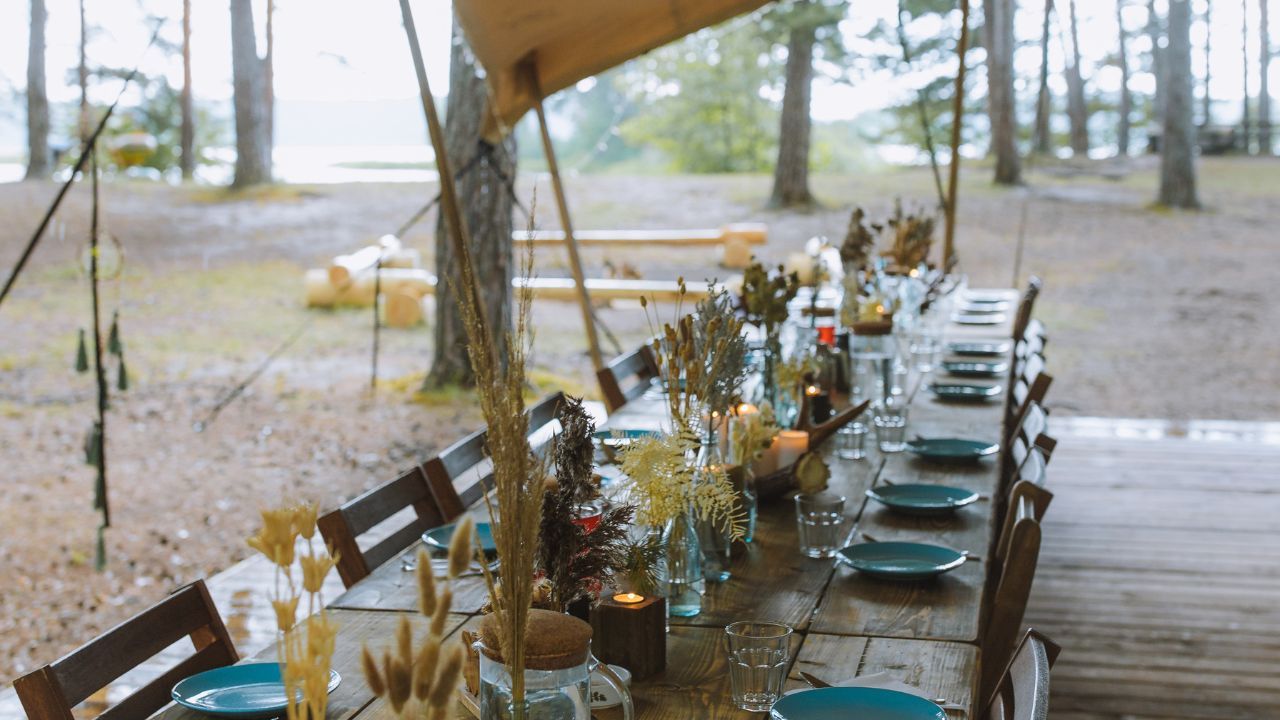How to plan a group retreat at a resort? This important question sets the stage for creating a memorable and productive experience for any team. A well-organized retreat can foster collaboration, enhance relationships, and provide a refreshing break from the daily routine. Selecting the right resort, crafting a balanced agenda, managing the budget wisely, and ensuring seamless communication are all essential steps that contribute to a successful retreat experience.
Choosing the ideal resort involves considering various factors such as location, amenities, and accessibility for all participants. An engaging agenda that blends work with leisure activities is crucial for maximizing the benefits of the retreat. Furthermore, effective budget management and communication strategies will ensure that all aspects of the retreat run smoothly and efficiently.
Selecting the Ideal Resort

Choosing the right resort for a group retreat is a crucial step that significantly influences the success of the event. A well-selected venue can enhance collaboration, foster relationships, and create a memorable experience for all participants. Attention to detail in this selection process can lead to a productive and enjoyable retreat that meets the specific needs of the group.When evaluating potential resorts, several key features should be considered to ensure that all aspects of the group’s requirements are met.
The ideal resort should provide a conducive atmosphere for both work and relaxation, which includes adequate meeting spaces, dining options, and recreational activities. The following aspects are essential when selecting a resort for a group retreat:
Key Features to Consider
Selecting the right resort involves assessing various features that align with the group’s objectives. The following points highlight critical considerations:
- Meeting Facilities: Ensure the resort has various flexible meeting spaces equipped with necessary technology such as projectors, audio-visual equipment, and reliable internet access.
- Accommodation Options: Choose a resort that offers a range of comfortable lodging to accommodate different preferences, including private rooms, suites, or shared accommodations as needed.
- Dining Services: Look for resorts that provide diverse dining options, including buffet-style meals, catered services, and the ability to accommodate dietary restrictions.
- Recreational Activities: Evaluate the availability of team-building activities, leisure amenities, and wellness programs that encourage relaxation and engagement, such as spas, pools, and outdoor excursions.
Importance of Location and Accessibility
The location of the resort is a vital factor that can affect attendance and engagement. A convenient and accessible venue allows all participants to arrive easily, minimizing travel stress. The following aspects illustrate the importance of location and accessibility:
- Proximity to Transportation: Select a resort that is near major transportation hubs like airports, train stations, or public transit options to facilitate easy access.
- Surrounding Attractions: Consider resorts located near local attractions or natural beauty spots to provide options for downtime and exploration.
- Safety and Security: Assess the safety of the surrounding area to ensure a secure environment for all attendees during their stay.
Amenities Offered by Different Resorts
The amenities provided by resorts can greatly enhance the experience for retreat participants. Comparing offerings from various resorts will help identify the best fit for the group’s specific needs.When evaluating amenities, consider the following:
- Wellness Facilities: On-site fitness centers, walking trails, and wellness programs can promote health and well-being, contributing to a more productive environment.
- Technology Services: Reliable Wi-Fi, video conferencing capabilities, and business support services are essential for maintaining productivity during the retreat.
- Event Planning Support: Resorts that offer dedicated event coordinators can assist in organizing logistics and catering to specific needs of the group.
Crafting a Retreat Agenda
Creating a well-structured agenda is essential for a successful group retreat at a resort. A thoughtfully designed agenda not only Artikels the daily schedule but also ensures that participants can engage in productive work while enjoying leisure activities. Balancing these elements fosters a conducive environment for collaboration and team bonding, ultimately leading to a more rewarding experience for all attendees.The agenda should reflect the overall goals of the retreat, integrating both structured activities and time for relaxation.
When planning your next vacation, consider exploring the luxurious experience offered by the top rated all inclusive resorts around the world. These exceptional resorts provide a comprehensive getaway, allowing you to indulge in gourmet dining, refreshing drinks, and various activities without the worry of additional costs. Whether you’re seeking relaxation on pristine beaches or exciting adventures, these resorts cater to every preference, ensuring an unforgettable holiday.
This careful planning allows for a seamless flow of events while accommodating the diverse needs of participants. By incorporating various activities that promote team building and collaboration, the agenda can effectively enhance interpersonal relationships and professional growth within the group.
When planning a vacation, considering the best accommodations can enhance your experience significantly. For travelers seeking convenience and luxury, exploring the top rated all inclusive resorts around the world? can provide an excellent starting point. These resorts offer comprehensive packages that cater to every need, ensuring a memorable getaway without the hassle of planning every detail individually.
Designing a Daily Schedule
An effective daily schedule is crucial for maintaining energy and focus throughout the retreat. The following points emphasize the importance of balancing work and leisure activities:
- Begin each day with a motivational session or team-building exercise to energize participants and set a positive tone.
- Incorporate focused work sessions, allowing participants to engage in strategic discussions and brainstorming in designated blocks of time.
- Schedule recreational activities during the afternoons, providing opportunities for relaxation and informal networking.
- Include evening social events, such as dinners or bonfires, to encourage camaraderie and informal interactions among team members.
Activities that Enhance Team Building and Collaboration
Incorporating meaningful activities into the agenda can significantly improve team cohesion and collaboration. Consider integrating the following elements:
- Workshops and skill-building sessions tailored to the group’s objectives, fostering both personal and professional development.
- Group challenges or competitions, such as scavenger hunts or escape room scenarios, that require teamwork and strategic thinking.
- Facilitated discussions, where team members can share insights and experiences, leading to deeper understanding and stronger connections.
- Networking opportunities with guest speakers or industry experts, offering fresh perspectives and fostering collaboration beyond the immediate team.
Incorporating Downtime and Recreational Options
Downtime is essential for participants to recharge and reflect on their experiences during the retreat. The agenda should thoughtfully integrate recreational options, allowing for a balance between work and relaxation. Important considerations include:
- Planning short breaks between sessions to enable participants to rest and rejuvenate, enhancing focus for subsequent activities.
- Offering various recreational options, such as yoga classes, guided nature walks, or spa treatments, to cater to different interests and preferences.
- Designating specific times for informal socializing, where participants can connect in a relaxed atmosphere, fostering stronger relationships.
- Encouraging participants to explore the resort’s facilities, which may include sports, swimming pools, or local attractions, promoting a sense of discovery and enjoyment.
“Balancing structured work with leisure activities is key to a successful retreat agenda, promoting engagement and fostering team collaboration.”
Budget Management for Group Retreats

Planning a group retreat at a resort requires careful consideration of budget management to ensure a successful event without overspending. Effective budget management not only involves understanding the potential costs associated with hosting a retreat but also implementing strategies to maximize value while minimizing expenses. This approach ensures that the retreat meets its objectives while being financially viable.One of the initial steps in budget management is to Artikel the various costs that may be incurred during the retreat.
Understanding these costs enables better planning and resource allocation. Below is a breakdown of potential costs associated with hosting a retreat at a resort:
Cost Breakdown for Hosting a Retreat
A comprehensive understanding of costs associated with a group retreat can aid in effective budgeting. The following are common expenses that should be considered:
- Venue Rental: Charges for the resort facilities, including meeting rooms and accommodations.
- Food and Beverage: Costs for catering services, including meals, snacks, and beverages provided to attendees.
- Transportation: Expenses related to travel to and from the resort, which may include bus rentals or shuttle services.
- Activities and Entertainment: Fees for any planned activities, workshops, or entertainment during the retreat.
- Materials and Supplies: Costs for printed materials, workshop supplies, and other necessary items for participants.
- Staffing: Expenses for any additional staff required for support during the retreat, such as coordinators or facilitators.
To ensure that the retreat provides value while keeping expenses in check, several strategies can be implemented to maximize the budget. These strategies can help in achieving a high-quality experience without excessive spending.
Strategies for Maximizing Value While Minimizing Expenses
Implementing certain strategies can lead to significant savings while ensuring a fulfilling retreat experience for all participants. Consider the following approaches:
- Early Booking: Secure reservations well in advance to benefit from early bird rates and discounts offered by resorts.
- Package Deals: Look for resorts that offer all-inclusive packages, which typically include accommodations, meals, and facilities at a discounted rate.
- Group Discounts: Inquire about group rates or special pricing for larger parties, as many resorts provide discounts for bulk bookings.
- Negotiate: Engage in discussions with resort management to negotiate rates or services based on your budget constraints.
- Local Vendors: Source local vendors for entertainment or activities, which may be more affordable than resort-provided options.
Securing funding or sponsorships can further relieve the financial burden of hosting a retreat. Identifying potential sources of funding ensures that the retreat can proceed smoothly without compromising on quality due to budget constraints.
Funding Options and Sponsorships
Exploring various funding options or sponsorships can provide necessary financial support for the retreat. Below is a list of potential sources to consider:
- Internal Budget Allocations: Utilize funds from departmental budgets specifically allocated for employee development or team-building activities.
- Corporate Sponsorship: Approach local businesses or partners for sponsorship opportunities in exchange for promotional visibility at the retreat.
- Fundraising Events: Organize fundraising activities leading up to the retreat to gather additional funds from interested participants.
- Grants: Research available grants that support organizational development or team-building initiatives applicable to your retreat.
- Participant Contributions: Consider asking participants to contribute a nominal fee to help cover costs, ensuring buy-in and commitment to the retreat experience.
By thoroughly managing the budget and exploring diverse funding options, organizers can create a memorable and impactful group retreat that aligns with their goals while adhering to financial constraints.
Communication and Coordination: How To Plan A Group Retreat At A Resort?

Effective communication and coordination are paramount for the success of a group retreat at a resort. Clear dialogue among team members ensures that everyone is aligned with the objectives and logistics of the retreat, fostering a collaborative atmosphere. Implementing structured communication strategies before, during, and after the retreat can greatly enhance participant engagement and overall satisfaction.Utilizing the right tools and platforms can simplify planning and streamline coordination efforts.
Many applications are designed specifically for organizing events and managing groups, making it easier to share updates and information in real-time. The selection of appropriate communication channels also plays a crucial role in maintaining transparency and efficiency.
Methods for Effective Communication, How to plan a group retreat at a resort?
Establishing robust communication practices is essential to keep all participants informed and engaged throughout the retreat planning process. The following methods can be utilized to facilitate effective communication:
- Regular Updates: Schedule weekly or bi-weekly meetings to discuss progress, address concerns, and share important updates with all team members.
- Email Newsletters: Distribute periodic newsletters providing key information about the retreat agenda, logistics, and any changes that may arise.
- Group Chat Platforms: Use tools such as Slack or Microsoft Teams for real-time communication, ensuring that all team members can ask questions and share information promptly.
- Shared Documents: Utilize platforms like Google Drive for collaborative document sharing, allowing team members to contribute to planning materials and access resources at any time.
Tools and Platforms for Coordination
Choosing the right tools can greatly enhance coordination efforts, making the planning process more efficient. Below are a few recommended platforms that can assist in managing various aspects of a group retreat:
- Event Management Software: Consider using tools like Eventbrite or Whova to manage registrations, itineraries, and participant communication.
- Project Management Tools: Platforms such as Trello or Asana can help organize tasks, assign responsibilities, and track deadlines to ensure timely completion of planning activities.
- Virtual Meeting Tools: Zoom or Microsoft Teams can facilitate remote meetings, allowing team members to connect regardless of location.
- Feedback Collection Tools: Use services like SurveyMonkey or Google Forms to gather participant feedback before, during, and after the retreat.
Guidelines for Gathering Feedback
Collecting feedback is integral to the continuous improvement of group retreats. Establishing clear guidelines for gathering and analyzing participant feedback can lead to valuable insights for future events. Consider the following guidelines:
- Pre-Retreat Surveys: Send out surveys prior to the retreat to gauge participant expectations and preferences.
- Mid-Retreat Check-ins: Conduct informal check-ins during the retreat to address any immediate concerns and gather insights on the participant experience.
- Post-Retreat Evaluation: After the retreat, distribute a detailed evaluation form that covers various aspects of the event, such as content, logistics, and overall satisfaction.
- Focus Groups: Organize small group discussions following the retreat to dive deeper into participant experiences and suggestions for improvement.
Gathering and acting on feedback not only enhances participant satisfaction but also strengthens the planning process for future retreats.